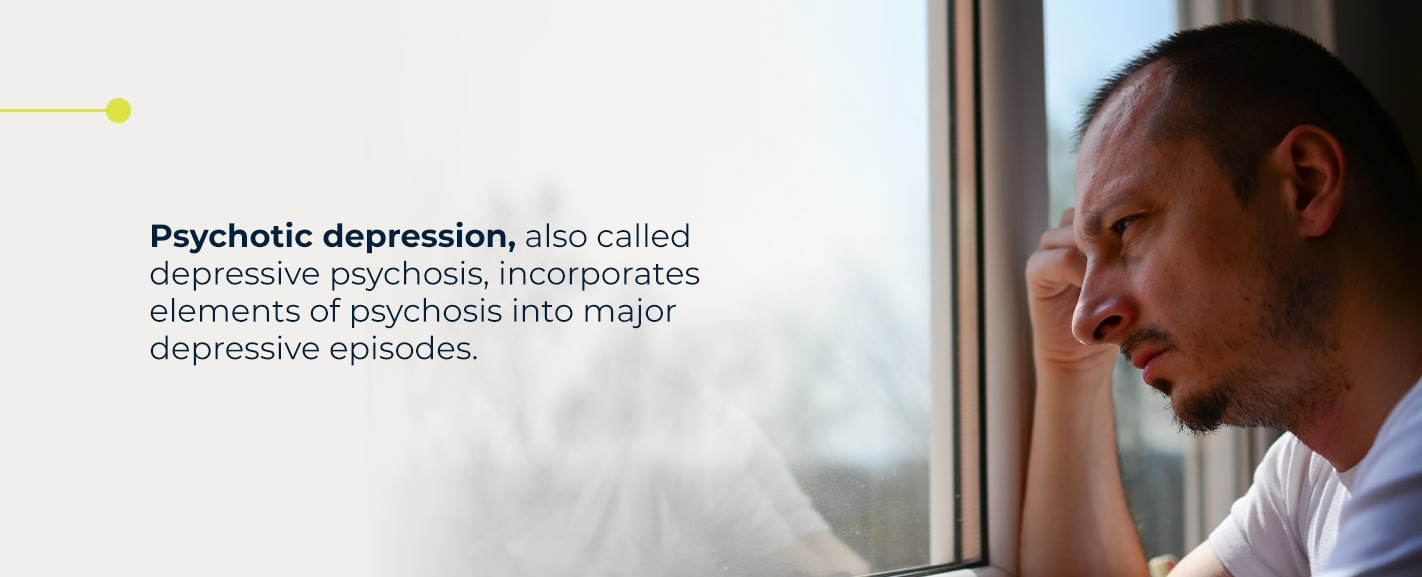- Oct 11
- Mental Health TreatmentRecovery
Most people recognize that depression is more than sporadic feelings of sadness or grief. Depression is a disorder that can be challenging to diagnose and treat because the symptoms often involve hopelessness, preventing sufferers from seeking the treatment they need and deserve. While only a psychiatrist can prescribe medication for patients diagnosed with a depressive disorder, many types of health care professionals can diagnose and treat depression.
People with depression disorders may feel their symptoms are insurmountable, but 80 to 90% of patients who access treatment for depression note an improvement in their mood and a decrease in symptoms. While you can’t diagnose and treat depression by yourself, it can be helpful to learn more about the different types of depression because they are not all the same.
If you recognize any of these symptoms, please reach out to a health provider or have a friend or family member assist you in getting help. You are never alone.
- Major Depression
- Persistent Depression
- Bipolar Disorder
- Perinatal Depression
- Psychotic Depression or Depressive Psychosis
- Premenstrual Dysphoric Disorder
- Seasonal Depression
- Atypical Depression
- Situational Depression
- You Are Never Alone – Seek Help at Gateway Foundation
1. Major Depression
The symptoms of major depressive disorder are lasting and severe, persisting most of the time for weeks or months on end. This kind of depression is relatively common, with about 7.1% of U.S. adults suffering at least one major depressive episode.
In addition to feeling depressed, if you have major depression, you may experience other symptoms, such as:
- Disruptions in your sleeping patterns
- Fatigue
- Loss of pleasure in activities you usually enjoy
- Weight fluctuations
- Difficulty concentrating
- Thoughts of suicide
Those with major depression often respond well to talk therapy, medication or a combination of both, but sometimes other interventions are necessary. These can include electroconvulsive therapy or transcranial magnetic stimulation.
2. Persistent Depression
Persistent depression involves depressive episodes that last for two years or longer. Also called dysthymic disorder, this form of depression is not as severe as major depression, but far longer-lasting. In the past year, the National Institute of Mental Health estimates that 1.5% of the U.S. population experienced persistent depression.
If you have persistent depression, you may experience symptoms like:
- Sadness or hopelessness
- Changes in appetite
- Low self-esteem
- Social withdrawal
Since this disorder is not as severe as major depression, treatments like psychotherapy and medication usually help people manage their symptoms.
3. Bipolar Disorder
Characteristics of bipolar disorder include swings between mania and depression. It causes unusual disruptions in mood, productivity and energy. Someone with bipolar disorder may have drastic changes in emotions, sleeping patterns and energy levels, with symptoms that can persist for days or weeks.
Someone with bipolar disorder may exhibit symptoms of mania, including:
- Feeling elated and irritable
- Sleeping less
- Eating less
- Acting recklessly or impulsively
Bipolar disorder also includes episodes of depression, characterized by:
- Experiencing sadness and hopelessness
- Having trouble concentrating or making decisions
- Sleeping more
- Eating more
- Contemplating death or suicide
Bipolar disorder might affect up to 4.4% of adults in America. Treatment options include psychotherapy and medication to stabilize and regulate mood changes.
4. Perinatal Depression
Perinatal depression primarily affects those who have given birth. Pregnant individuals may experience prenatal depression before their baby is born, and postpartum depression after birth. Perinatal depression can also affect the partner that has not given birth. Research indicates almost 10 to 20% of pregnant people in the U.S. experience some form of perinatal depression.
Symptoms of perinatal depression include:
- Sadness
- Extreme anxiety about the baby’s health
- Thoughts of self-harm or of harming the baby
- Difficulty bonding or forming attachments with the new baby
- Irritability
It is crucial to remember that perinatal depression is a disorder, and those with symptoms of it are not bad parents. If you have symptoms of perinatal depression, reach out to a health professional for assessment and to establish a treatment plan that is right for you.
5. Psychotic Depression or Depressive Psychosis
Psychotic depression, also called depressive psychosis, incorporates elements of psychosis into major depressive episodes. Clinically, this disorder is called major depressive disorder with psychotic features.
Because their depression is so severe, people with psychotic depression may also experience symptoms, such as:
- Hallucinations
- Delusions
- Paranoia
Health providers may treat this type of depression with antidepressant and antipsychotic medications, plus psychotherapy.
6. Premenstrual Dysphoric Disorder
People who experience premenstrual dysphoric disorder have depression symptoms at the onset of their periods. PMDD can be challenging to diagnose, as many symptoms overlap with the less severe premenstrual syndrome.
If you have PMDD, you could have a combination of physical and psychological symptoms such as:
- Bloating and cramps
- Headaches
- Fatigue
- Anxiety and panic attacks
- Extreme mood swings
- Feeling overwhelmed easily
PMDD symptoms are similar to those of PMS, but they are markedly more severe. Researchers are still studying PMS and PMDD to discover the root causes and best courses of treatment. Currently, there are both pharmacologic and non-pharmacologic treatment options.
7. Seasonal Depression
The clinical term for seasonal depression or seasonal affective disorder is major depressive disorder with seasonal pattern. This seasonal pattern often occurs during the winter months when there are shorter days and fewer hours of sunlight. Those with SAD feel the symptoms of major depression daily, but the change in seasons usually influences a lessening or improvement of their symptoms.
8. Atypical Depression
Atypical depression is a type of major depression with a significant caveat — people with atypical depression may see an elevation in their mood when something positive occurs in their life. While a hallmark of major depressive disorder is a persistent feeling of sadness and helplessness, no matter the situation, if you have atypical depression, you might see greater emotional reactivity to positive events.
9. Situational Depression
Major life events and unexpected situations might trigger something called situational depression. While depressive disorders generally occur independently of your quality of life — for example, someone with abundant support systems and a steady, well-paying job can still experience depression — situational depression results from significant life events. The sudden death of a loved one, a scary medical diagnosis, divorce and abusive situations can all prompt bouts of situational depression.
You Are Never Alone — Seek Help at Gateway Foundation
The crucial thing to know about depression is that it is highly treatable. Unfortunately, disorders on the depression spectrum can make recovery challenging for people who struggle with substance abuse. While some treatment options for depression include medication, antidepressants can be addictive, so it’s essential to consult with a health care provider about your struggles with co-occurring addiction and depression.
At Gateway Foundation, you can get personalized treatment for your struggles with addiction and depression through medical and psychological interventions, such as individualized therapy and medication. We use evidence-based practices, proven treatment plans and a compassionate approach to empower our patients to achieve lifelong success. Contact us today to start your journey to recovery.




